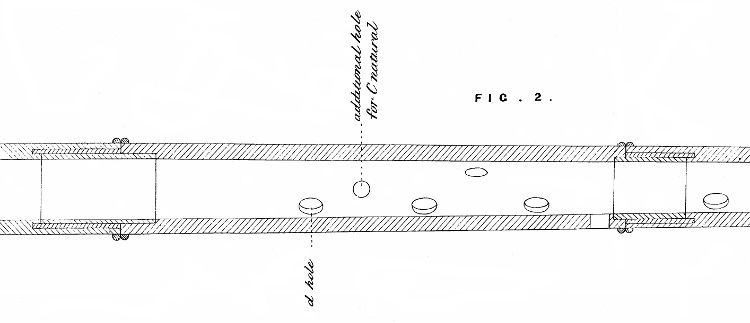I’m in agreement with those who feel the Patent head is more a liability than an asset, these days. For the reasons stated - too heavy, prone to problems and unnecessary, post modern pitch being stabilised at or around A 440. And prevents you from finding the ideal stopper position for your lip and your music.
I’m also in agreement with those who feel it’s a beaut bit of 19th century engineering! But the more I think upon it, the less I think it was a well-applied bit of 19th century engineering.
The problem it was intended to address is keeping the stopper in the optimum place as the pitch was tweaked wildly, presumably between the afternoon tea party set (playing along with Lady Astor’s Broadwood, tuned circa 430Hz), and those brash young bucks from the Philo, hammering away at the newly introduced High Pitch, circa 453-455Hz. Engaged for both gigs? Too easy, a few twists of the wrist and the flute is brought into tune at the other pitch, and the stopper relocated for best performance, long before the hansom cab gets to the concert venue.
But that ignores the real problem of pushing a flute over the range of less than 430 to more than 454 - the needed change in body scaling. Earlier in the baroque, we saw flutes with up to 5 or more corps de réchange - central sections of differing lengths to fiddle the body scaling to work at different pitches. That was the right way to do the job, but expensive in keyed flutes.
I am intrigued by a drawing of an 8-key flute with what appears to be three sets of tuning slides - one between head and LH section, one at junction of LH and RH sections, and the third between RH section and foot. That would be a way of adjusting the scale length of the flute! What makes it relevant to this discussion is that the drawing appears on Rose’s patent for the Boehm flute, lodged by him “on behalf of a foreigner (Boehm) residing abroad”. Here’s the central section of that drawing:

(More at http://www.mcgee-flutes.com/Rose1847patent.htm)
Given this comes 25 years after the Patent Head patent, perhaps it suggests Rose is having second thoughts?
I wonder if he ever made one?